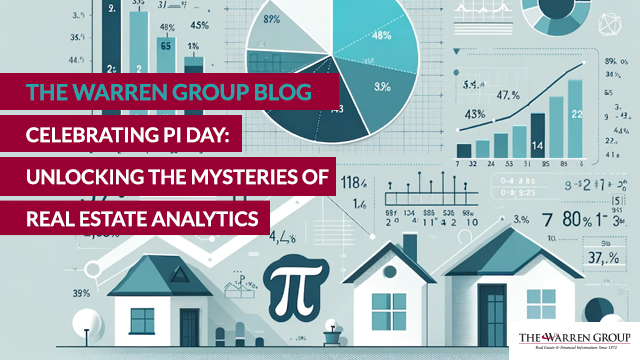Welcome, fellow real estate enthusiasts, data nerds, and math lovers alike! Today, as we celebrate the transcendental and irrational beauty of Pi (π), let’s take a moment to explore its curious connection to the world of real estate analytics.
Yes, you heard it right—Pi and real estate analytics make for a surprisingly intriguing duo!
Pi, the mathematical constant representing the ratio of a circle’s circumference to its diameter, has fascinated mathematicians for centuries. But how does this mathematical marvel intertwine with the complexities of the real estate market? Let’s delve into the mathematical rabbit hole and uncover the unexpected connections.
The Geometry of Real Estate
At first glance, real estate might seem far removed from the realm of circles and spheres. However, think about it—many properties, especially land parcels, have geometric shapes. Whether it’s calculating the area of a plot for development or determining the optimal layout of a building on a given lot, geometry plays a crucial role in real estate analysis. And where there’s geometry, there’s Pi!
Spatial Analysis
Pi isn’t just about circles—it’s also about space. Real estate analytics often involve spatial analysis, where properties are mapped and analyzed based on their geographic locations. From identifying prime locations for commercial development to assessing neighborhood trends, spatial analytics relies on mathematical principles, including Pi, to unlock valuable insights.
Predictive Modeling
Ever wondered how analysts forecast trends in the real estate market? Enter predictive modeling—a sophisticated approach that utilizes historical data, statistical algorithms, and yes, mathematical constants like Pi, to predict future outcomes. Whether it’s projecting property prices or estimating housing demand, predictive models leverage mathematical principles to make informed decisions.
Data Visualization
Pi may be a string of seemingly random digits, but when visualized, it reveals mesmerizing patterns. Similarly, in real estate analytics, data visualization tools transform raw real estate and mortgage data into insightful charts, graphs, and maps. Whether it’s plotting housing price trends over time or mapping demographic shifts, visualization techniques help stakeholders grasp complex real estate dynamics at a glance.
Machine Learning and AI
In today’s data-driven world, machine learning algorithms and artificial intelligence are revolutionizing the way we analyze real estate data. These advanced technologies ingest vast amounts of data, detect patterns, and make predictions—all with the help of mathematical foundations, including Pi. From personalized property recommendations to risk assessment models, machine learning algorithms powered by Pi-inspired math are reshaping the real estate landscape.
So, here’s to Pi Day—a celebration of both mathematical wonder and the analytical prowess that drives innovation in real estate. As we raise our metaphorical glasses (or perhaps slices of π-shaped pie), let’s toast to the curious connections between Pi and the fascinating world of real estate analytics.
Happy Pi Day, everyone!


Recent Comments